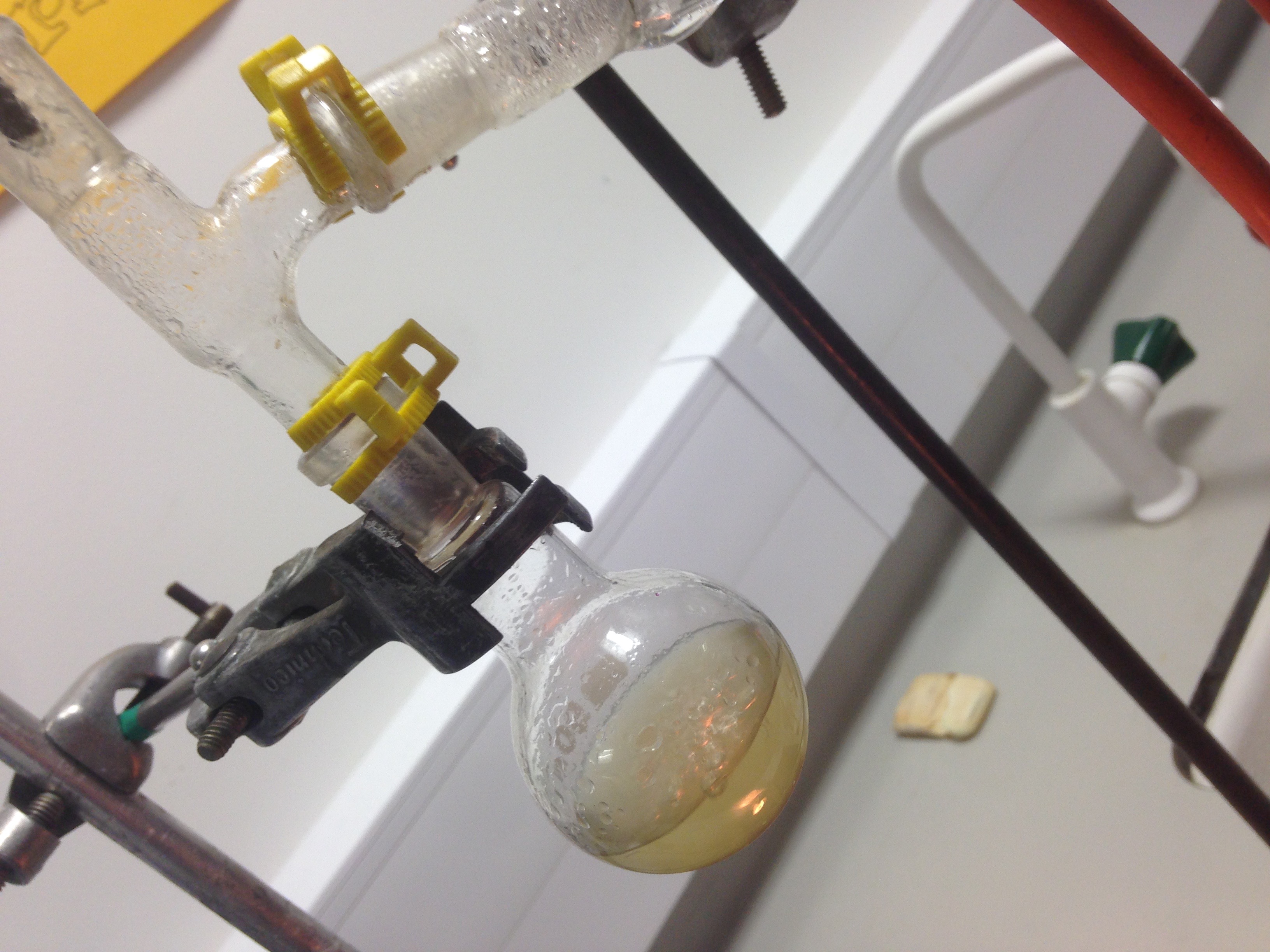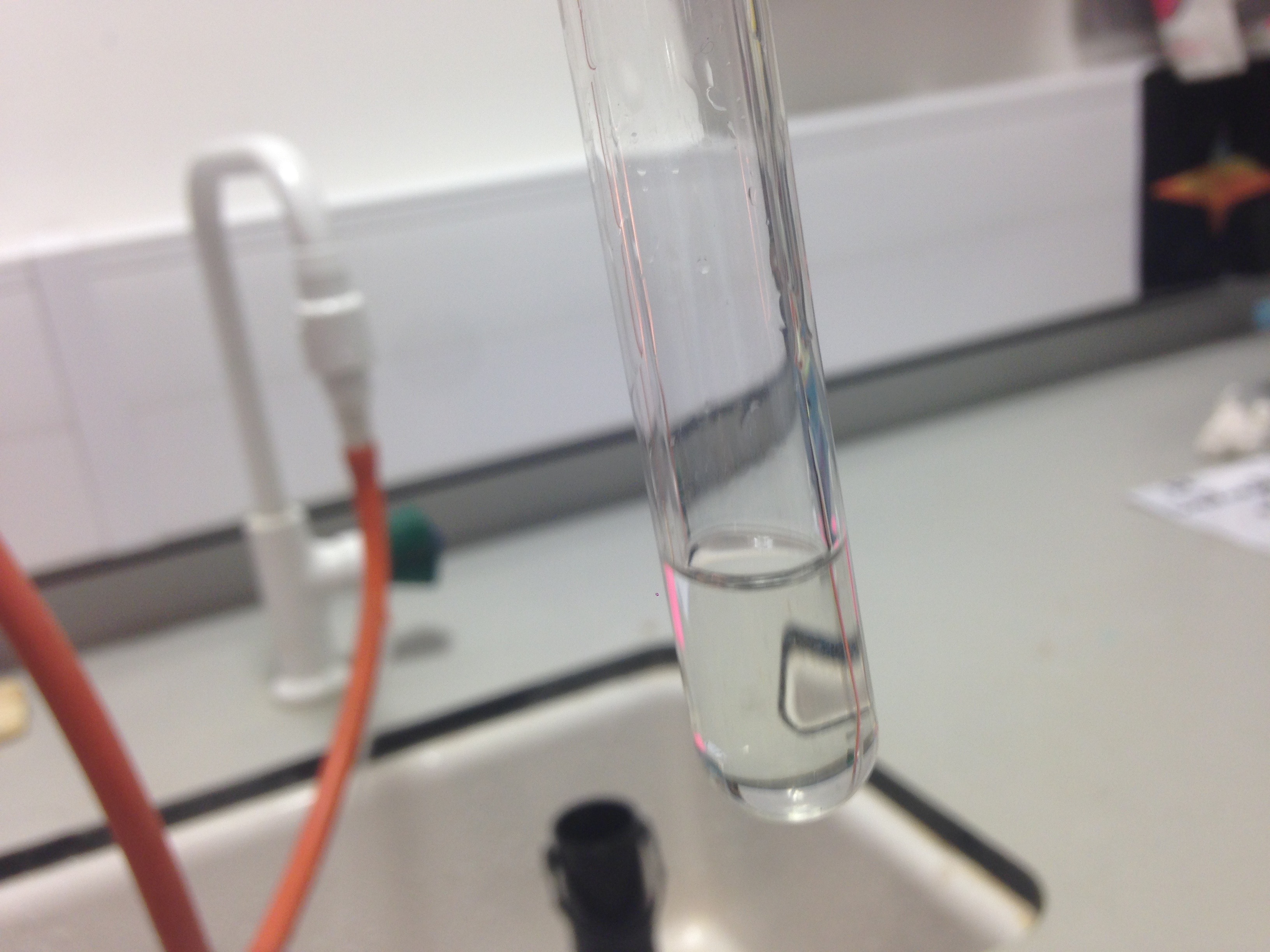Our Experiment
|
To test whether our toilet would function we decided to experiment by recreating the distillation process using a bunsen burner and other equipment. We created artificial urine using water, urea and sodium chloride (common table salt), which are three of the main components found in urine. After that we conducted multiple tests on the liquid so we could compare the reaction. While Universal indicator and litmus paper was unresponsive, universal indicator paper established that the urine was a weak alkali on the PH scale. |
|
|
After this we added a pipette of Sodium Hydroxide which reacted with the urea and became brown. When we had finished conducting these tests we placed the artificial urine into a flask which we positioned over a Bunsen burner on a low heat. Within five minutes the urine had begun to boil and when ten minutes had passed the gas had begun to precipitate in the condensing tube, leaving the Sodium Chloride and urea in the first flask. |
|
|
The remaining pure water was deposited into another flask, this separating the two products. We ran some tests on our purified water but this time the liquid was neutral on the PH scale, and the addition of Sodium Hydroxide produced no result, which therefore proved that the urine had been successfully purified. |


